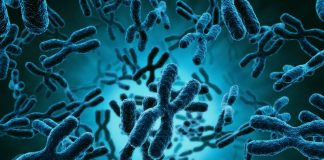Thanks to part 1 and 2 of this series, we are now familiar with the main responses to cellular stress and which organelles it affects. Now, we will be looking at how cellular stress impacts our organs and our health, and how to deal with it.
Conditions linked to cellular stress
Cardiovascular issues
It’s old news: inflammation is a key mechanism when it comes to cardiovascular diseases. One of the first responses of our cells when facing cellular stress is to produce pro-inflammation cytokines that can signal to other cells that there is an issue. This state is only beneficial when temporary. When it becomes chronic, it triggers physiopathological changes such as a stiffening of the arteries, faster heartbeat, and even an increase of atherosclerosis [1].
Diabetes and weight issues
Leptin (our satiety hormone) and glucose are molecules that signal to the brain that it should modulate our food intake. When we eat, our leptin and glucose levels increase, just like our levels of free radicals. When we eat too much and/or too often, neurons become resistant to leptin and more sensitive to free radicals, which feeds the circle that maintains obesity and increases the risk of diabetes [2]. The perturbation of the antioxidant defense system created in that situation triggers changes within the mitochondria, which have a central role in maintaining the balance between antioxidants and oxidants. An excess of glucose increases free radicals production, because the mitochondria are saturated and their control system is disturbed. At the same time, storing too much glucose as fat will start inflammatory processes that will increase free radicals production as well [3].
Neurodegenerative diseases
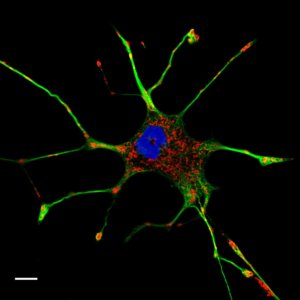
Alzheimer’s disease, Huntington’s chorea, multiple sclerosis or Parkinson’s disease have all been linked to cellular stress and in particular oxidative stress[4]. Family multiple sclerosis is the most demonstrative example, since this genetic disease is due to a defect in the gene of an antioxidant enzyme, superoxide dismutase. It appears that neurons have a defense mechanism against this stress but that they are sometimes more sensitive (for morphological, physiological or genetic reasons). When this is the case, or during aging, mitochondria seem to dysfunction in these neurons and cause an inflammatory response relayed by microglia (the immune cells of the brain)[4, 5]. A detrimental loop is then set up which can trigger the synthesis of poorly folded proteins, increase the activity of certain enzymes or even deregulate the apoptosis and autophagy mechanisms. All these events can lead to the appearance of neurodegenerative diseases.
Cancer
Chronic oxidative stress, the prevalence of which increases with age, stimulates tumor growth and the occurrence of metastasis by modifying the cellular environment and making it more prone to the multiplication of resistant cells. Indeed, the cells that make up tumors develop more important defense mechanisms than our normal cells, and are capable of proliferating under rigorous conditions. Once established, cancer cells will continue to modify their environment in order to promote their survival, notably through the redesign of microcirculation and connective tissue[6].
Several other conditions are related to stress, such as inflammatory metabolic diseases (arthritis, cataracts…) or skin aging[7, 8].
Daily habits to lower cellular stress
Avoid external stressors
Exogenous causes of stress such as tobacco, alcohol, sun or food can be moderated or even avoided.
It is obvious that tobacco is harmful in many ways. The combustion of a cigarette causes the formation of more than 4000 toxic substances, 40 of which are classified as carcinogenic. All these compounds, in addition to the lack of cellular oxygenation caused by harmful gases and the decrease in lung capacity, create stress, particularly oxidizing. At the same time, smokers often present a chronic deficit in vitamins, minerals and trace elements, requiring a much higher antioxidant intake.
Alcohol, and more particularly ethanol in alcoholic beverages, is a major oxidant and is lethal in high doses. Interestingly, resveratrol, found in wine (and grapes) is a fairly powerful anti-aging molecule but ethanol, in the presence of active iron, will create free radicals. The resulting oxidative stress is a major cause of liver cancer and alcohol potentiates the carcinogenic effect of other harmful substances ingested at the same time.
UV radiation, on the other hand, has many harmful effects on human tissues, particularly in terms of cancer. However, it is important to expose yourself to the sun regularly to synthesize vitamin D, necessary for calcium fixation in bones. The UV spectrum is divided into UVA, UVB and UVC. Some is absorbed by the atmosphere and only 0.5% UVB and 6.3% UVA reach the ground. Without the use of sunscreen, these UV rays will cause changes in our photosensitizers (such as porphyrin or flavine) and activate the production of free radicals. UV rays are also biochemical modifiers, capable of causing genetic damage.


Finally, one of the last easily modulable exogenous causes concerns food. Red meats (beef, veal, lamb, duck) cause cellular oxidation that can lead to the development of cancer, especially colorectal cancer. Processed meats (raw ham, bacon, sausage) and charcuterie also increase this risk by up to 20% when consumed daily. Meat itself is not carcinogenic, it is the iron it contains that can cause the formation of free radicals, similar to alcohol. It may also contain nitrosamines, the concentration of which varies according to the method of preservation (smoking, salting). They are molecules used to limit the proliferation of bacteria, but they can cause changes at the genomic level. Finally, the cooking method has a role to play: it is better for your health to cook your meat as little as possible[9].
Fatty acids are also powerful oxidants but not all are harmful: saturated acids, except in excess, are not bad for our organs; unsaturated fatty acids (omega 3, 6 and 9) are essential for our health; trans fatty acids (texture agents, preservatives, margarines, industrial fats, fried foods…), on the other hand, are to avoid. The latter produce free radicals in large quantities and promote cardiovascular diseases, diabetes or hypercholesterolemia[9].
Lower the impact of metabolism issues
In addition to exogenous causes, endogenous sources can cause cellular stress. Hormonal deregulation is one of the main causes of stress. When we talk about hormones, we immediately think of estrogen, progesterone or testosterone. Although the levels of these hormones decrease with age and they seem to have a protective role, especially for inflammation and cancers[10], the most deregulated hormone and the most sensitive to stress is insulin. The main consequences of a stressed environment are the development of insulin resistance, dysfunction of the pancreatic cells β, mitochondrial dysfunction and a change in glucose tolerance, all of which can lead to diabetes[2]. At the same time, stress also increases inflammation, alters the immune system (and decreases our resistance to infection), both mechanisms accelerating aging and the associated risks[11].
Beyond the genetic predispositions that can make these pathologies appear and against which we can do nothing, a diet low in sugars, controlling our inflammation levels (either through anti-inflammatory drugs or by slightly adapting our lifestyles) and protection against chronic stress (meditation, sports, stress management at work…) are elements that can help us age healthier.
A balanced lifestyle
Moderate sport has been shown to regulate psychological and cellular stress. However intensive training is not recommended and generates metabolic waste products (urea, ammonia, acids…) which are transported from the muscle to the liver via the blood. During an important session, these wastes are not metabolized quickly enough and can cause the synthesis of free radicals[12].
Psychological stress is a toxin generator. When an organism is stressed, it secretes hormones (adrenaline, cortisol), which are released to a greater or lesser extent in the body and can cause heart and kidney damage. These hormones are supposed to help us to face a situation (fear, anger…) but when stress becomes chronic, the modifications of our body which should be occasional (change in blood pH, increase in heart rate, nervous tension…) are recurrent and detrimental. In parallel to these events, stress also produces free radicals, further increasing cellular stress. Finally, insomnia is often the result of stress, creating a self-sustaining loop. Meditation and breathing exercises are often life-saving to manage these phenomena[13]. Anticipating stress by using a schedule and relativizing delays, problems and sources of stress can also help. Good nights’ sleep (7-8 hours) is also important. It is possible to use plants, such as valerian, to sleep better (be careful, do not use when pregnant). Finally, spending time with loved ones, having a hobby, taking the time to laugh and decompress or even starting psychotherapy can help relieve stress.

Oligoelements and vitamins that can help reduce cellular stress
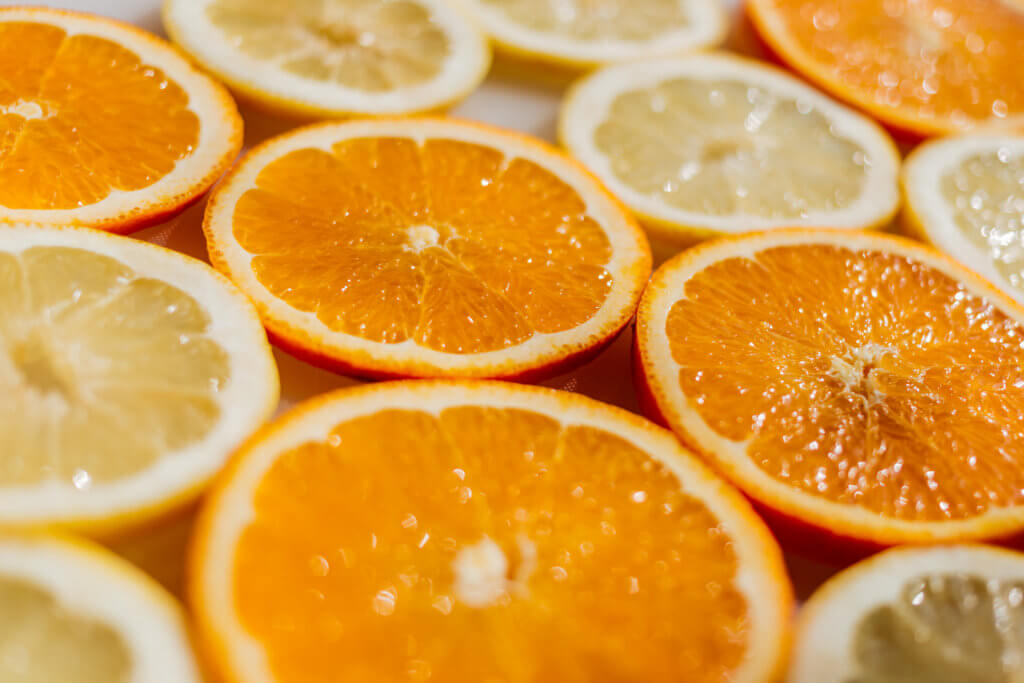
Zinc, manganese and copper supplementation is very important for the proper action of superoxide dismutases, the enzymes that treat free radicals and eliminate them. Selenium is also central to help gluthation peroxidase, another enzyme involved in oxidant management. Vitamins A, C and E are also antioxidants essential to many mechanisms (cellular stress and others, such as vision, certain infections, neurogenesis…). On the other hand, iron, although important, especially for the fixation of oxygen on hemoglobin and the activity of several enzymes, must not be in excess. During the Fenton reaction (decomposition of hydrogen peroxide in the presence of metal salts), iron can indeed create free radicals and increase oxidative stress.
So where do we find these essential elements?
You can, of course, take food supplements. There are many that combine these elements, available on the market. You can also slightly remodel your diet. Zinc, although poorly absorbed, is present in oysters (the food that contains the most), meat, nuts and legumes. Manganese is found in grain products, shellfish, legumes, vegetables and nuts. Copper is present in offal, seafood, nuts and seeds. It is also found in wheat bran cereals and pulses. Selenium intake is highly dependent on the soil content, but Brazil nuts are the richest food, with a single nut providing the recommended daily intake. Vitamin A can be found in animal products: liver, meat, fish, whole milk, butter, eggs, cheese… Beta-carotene (provitamin A) is found in carrots, apricots, mangoes, dark green vegetables, sweet potatoes… Vitamin C is mainly present in coloured and raw fruits and vegetables: red pepper, orange, lemon, grapefruit, cantaloupe, raspberry, strawberry, broccoli, tomato… Vitamin E is found in large quantities in nuts, seeds, vegetable oils and, to a lesser extent, green leafy vegetables. However, since the foods richest in vitamin E are fatty foods, it is recommended to supplement with synthetic vitamin E. Overall, by increasing your intake of fruits and vegetables, legumes, seafood and nuts, you can achieve a balance of trace elements and vitamins that keeps you healthy and helps fight cell stress.
All our articles on Cellular stress and aging:
Cellular stress and aging, a necessary duo?
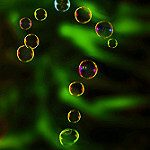 Although it is recognized as a risk factor by the scientific community, many questions remain regarding cellular stress. Its main role in aging-related diseases and in aging itself is still being studied.
Although it is recognized as a risk factor by the scientific community, many questions remain regarding cellular stress. Its main role in aging-related diseases and in aging itself is still being studied.
Part 1: The different types of cellular stress
 Cellular stress can mean many different mechanisms, whether the stress is mechanical, toxic, chemical, thermic, osmotic, ionizing… They all play a role in the aging process of our cells.
Cellular stress can mean many different mechanisms, whether the stress is mechanical, toxic, chemical, thermic, osmotic, ionizing… They all play a role in the aging process of our cells.
Part 2: The organelles targeted by cellular stress
 Cellular stress gets transmitted through several organelles in our cells, especially those of the mitochondria, the mitochondria and the nucleus, among others. Their response can vary and only give the cell under stress two viable options: adapt and survive, or die.
Cellular stress gets transmitted through several organelles in our cells, especially those of the mitochondria, the mitochondria and the nucleus, among others. Their response can vary and only give the cell under stress two viable options: adapt and survive, or die.
Part 3: Dealing with cellular stress
 In order to slow down the aging process of our cells, we must control our cellular stress. In this article, we will look into the techniques and/or treatments currently used to treat all forms of cellular stress.
In order to slow down the aging process of our cells, we must control our cellular stress. In this article, we will look into the techniques and/or treatments currently used to treat all forms of cellular stress.
References
[1] Morales CR, Pedrozo Z, Lavandero S, Hill JA. Oxidative Stress and Autophagy in Cardiovascular Homeostasis. Antioxidants & Redox Signaling. 2014;20(3):507-518
[2] Rains JL, Jain SK. OXIDATIVE STRESS, INSULIN SIGNALING AND DIABETES. Free radical biology & medicine. 2011;50(5):567-57
[3] Bondia-Pons, I., Ryan, L. & Martinez, J.A. Oxidative stress and inflammation interactions in human obesity, J Physiol Biochem 2012;68:701
[4] Goldstein DS. Stress, Allostatic Load, Catecholamines, and Other Neurotransmitters in Neurodegenerative Diseases. Cellular and molecular neurobiology. 2012;32(5):661-666
[5] Martin LJ. Biology of Mitochondria in Neurodegenerative Diseases. Progress in molecular biology and translational science. 2012;107:355-415
[6] Toullec A, Gerald D, Despouy G, et al. Oxidative stress promotes myofibroblast differentiation and tumour spreading. EMBO Molecular Medicine. 2010;2(6):211-230
[7] Davis MC, Zautra AJ, Younger J, Motivala SJ, Attrep J, Irwin MR. Chronic Stress and Regulation of Cellular Markers of Inflammation in Rheumatoid Arthritis: Implications for Fatigue. Brain, behavior, and immunity. 2008;22(1):24-32
[8] Zhu J, Hou Q, Dong XD, et al. Targeted Deletion of the Murine Lgr4 Gene Decreases Lens Epithelial Cell Resistance to Oxidative Stress and Induces Age-Related Cataract Formation. Nagaraj R, ed. PLoS ONE. 2015;10(3):e0119599
[9] Ulrich-Lai YM, Fulton S, Wilson M, Petrovich G, Rinaman L. Stress Exposure, Food Intake, and Emotional State. Stress (Amsterdam, Netherlands). 2015;18(4):381-399
[10] Monteiro R, Teixeira D, Calhau C. Estrogen Signaling in Metabolic Inflammation. Mediators of Inflammation. 2014;2014:615917
[11] Muralidharan S, Mandrekar P. Cellular stress response and innate immune signaling: integrating pathways in host defense and inflammation. Journal of Leukocyte Biology. 2013;94(6):1167-1184
[12] Kochanowicz A, Sawczyn S, Niespodziński B, Mieszkowski J, Kochanowicz K, Żychowska M. Cellular Stress Response Gene Expression During Upper and Lower Body High Intensity Exercises. Martinuzzi A, ed. PLoS ONE. 2017;12(1):e0171247
[13] Epel E, Daubenmier J, Moskowitz JT, Folkman S, Blackburn E. Can meditation slow rate of cellular aging? Cognitive stress, mindfulness, and telomeres. Annals of the New York Academy of Sciences. 2009;1172:34-53
Dr. Marion Tible

Author/Reviewer
Auteure/Relectrice
Marion Tible has a PhD in cellular biology and physiopathology. Formerly a researcher in thematics varying from cardiology to neurodegenerative diseases, she is now part of Long Long Life team and is involved in scientific writing and anti-aging research.
More about the Long Long Life team
Marion Tible est docteur en biologie cellulaire et physiopathologie. Ancienne chercheuse dans des thématiques oscillant de la cardiologie aux maladies neurodégénératives, elle est aujourd’hui impliquée au sein de Long Long Life pour la rédaction scientifique et la recherche contre le vieillissement.
En savoir plus sur l’équipe de Long Long Life
Dr Guilhem Velvé Casquillas

Author/Reviewer
Auteur/Relecteur
Physics PhD, CEO NBIC Valley, CEO Long Long Life, CEO Elvesys Microfluidic Innovation Center
More about the Long Long Life team
Docteur en physique, CEO NBIC Valley, CEO Long Long Life, CEO Elvesys Microfluidic Innovation Center
En savoir plus sur l’équipe de Long Long Life



![[Video] Eurosymposium on Healthy Ageing, Brussels, 2018 Eurosymposium on Healthy Aging](http://www.longlonglife.org/wp-content/uploads/2019/07/P1310252-218x150.jpg)





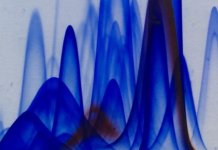

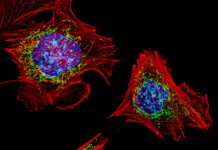

![[Video] – The 9 Causes of Aging, Episode 7, Senescence – with Dr. Guilhem Velvé Casquillas sénescence long long life longévité transhumanisme vieillissement cellules sénescentes](http://www.longlonglife.org/wp-content/uploads/2019/05/sénescence-long-long-life-longévité-transhumanisme-vieillissement-cellules-sénescentes-1-324x160.png)
